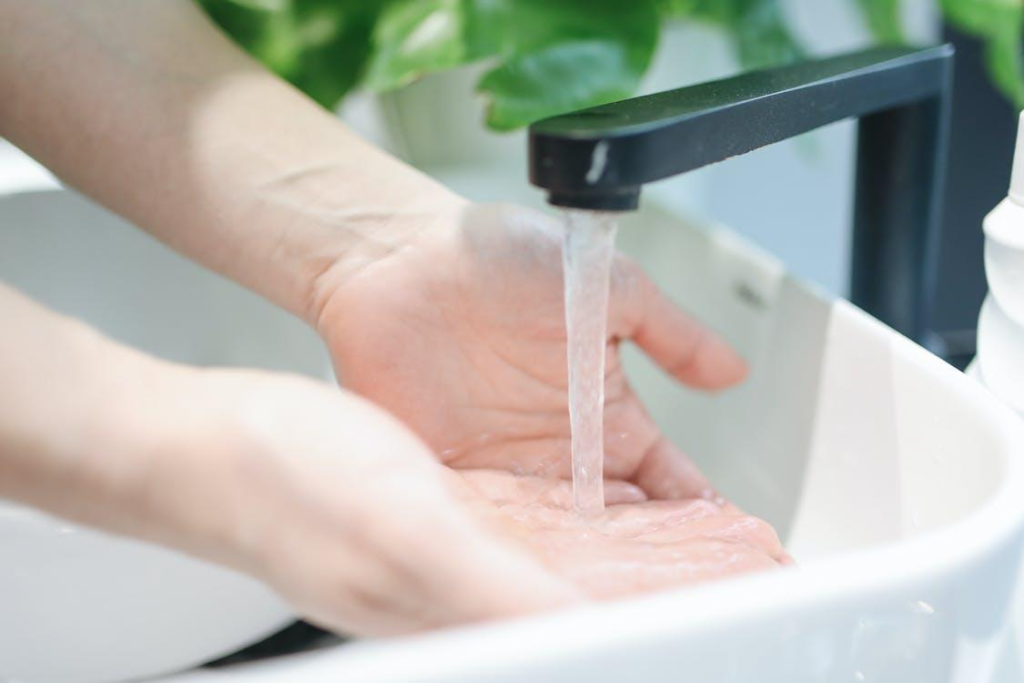Touchless faucets have gained popularity in recent years due to their convenience, hygiene benefits, and modern appeal. However, with any new technology, myths and misconceptions can arise. In this blog, we aim to debunk the most common myths surrounding touchless faucets, providing you with accurate information and helping you make informed decisions for your home.
As industry experts, The Home Menders are here to separate fact from fiction and offer our professional services for all your touchless faucet needs. Let’s get started!
Myth 1: Touchless Faucets Are Only Suitable for Commercial Use
Touchless faucets were initially associated with commercial settings like restaurants and public restrooms. However, this myth overlooks the significant advancements in touchless faucet technology and its adaptation for residential use. Today, touchless faucets are available in a wide range of styles and finishes, making them a stylish and practical addition to any modern home.
Myth 2: Touchless Faucets Are Overly Sensitive and Waste Water
One common misconception is that touchless faucets are overly sensitive, leading to unintentional activation and water wastage. However, touchless faucets are designed with sophisticated sensor technology that detects hand movements accurately, minimizing false activations. Additionally, they often have built-in water-saving features, such as automatic shut-off after a set period of inactivity, ensuring water efficiency.
Myth 3: Touchless Faucets Are Expensive and Not Cost-Effective
Some believe that touchless faucets are overly expensive and not worth the investment. While touchless faucets may have a higher upfront cost compared to traditional faucets, they offer long-term benefits that make them cost-effective. Touchless faucets help conserve water by minimizing wastage and can reduce the spread of germs, promoting better hygiene in your home. Additionally, they often have a longer lifespan and require fewer repairs, saving you money in the long run.
Myth 4: Touchless Faucets Are Difficult to Install and Maintain
Some believe that touchless faucets are complicated to install and maintain, requiring professional assistance at all times. In reality, many touchless faucets come with straightforward installation instructions and can be easily installed by homeowners with basic plumbing knowledge. As for maintenance, touchless faucets generally require the same care as traditional faucets, including periodic cleaning and replacement of batteries or power sources.
Myth 5: Touchless Faucets Are Prone to Malfunctions and Require Frequent Repairs
There is a misconception that touchless faucets are prone to malfunctions, leading to frequent repairs. While any plumbing fixture can experience issues, high-quality touchless faucets from reputable manufacturers are built to be reliable and durable. Routine maintenance, such as cleaning the sensors and ensuring proper power supply, can help prevent potential malfunctions and extend the lifespan of your touchless faucet.
Myth 6: Touchless Faucets Are Not Reliable in Terms of Water Temperature Control
Many believe touchless faucets lack precise temperature control, leading to unpredictable hot or cold water flows. In reality, touchless faucets come with temperature control features that allow you to set and adjust the desired water temperature. You can still enjoy the convenience of touchless operation while having complete control over the water temperature to suit your preferences.
Myth 7: Touchless Faucets Require Constant Battery Replacement
There is a myth that touchless faucets consume batteries quickly and require frequent replacements, leading to ongoing maintenance and added expenses. However, touchless faucets are designed to be energy-efficient and often have power-saving features. Many models come with long-lasting batteries or alternative power options like AC adapters. With proper usage and occasional battery checks, touchless faucets can operate for an extended period before requiring replacement.
Myth 8: Touchless Faucets Are Not Durable and Prone to Breakage
Touchless faucets are engineered with durability in mind. They are constructed with high-quality materials and designed to withstand regular use and potential water exposure. With proper installation and maintenance, touchless faucets can offer long-lasting performance and reliability.
Myth 9: Touchless Faucets Are Difficult to Use for Children and the Elderly
There’s a common belief that touchless faucets may pose challenges for children or the elderly, who may struggle to activate or understand their operation. However, touchless faucets are designed to be user-friendly and intuitive. Most models have adjustable sensors or offer manual controls as alternatives. They can be easily operated by individuals of all ages, including children and the elderly, providing convenience and ease of use.
Myth 10: Touchless Faucets Are Not Environment-Friendly
Touchless faucets are actually designed to promote water conservation. The sensors can detect when hands are present, activating the flow of water and automatically shutting it off when hands are removed. This feature helps minimize water wastage, making touchless faucets an eco-friendly choice for your home.
Wrapping Up
Now that we’ve debunked the most common myths about touchless faucets, you can make informed decisions regarding this innovative technology. If you’re considering installing or repairing a touchless faucet, The Home Menders are here to offer our expertise and professional services. Contact us today for expert advice, installation, and repair services. Let us bring the convenience and modern appeal of touchless faucets to your home!

